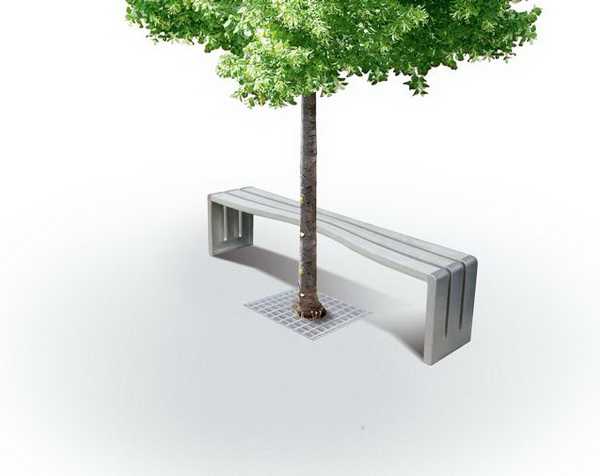
Entreprise : Tetra Pak / www.tetrapak.com
Design : Les Sismo et Carré Noir / www.sismodesign.com / www.carrenoir.com
Designers : Antoine Fenoglio et Frédéric Lecourt pour Les Sismo et Christophe Fillâtre pour Carré Noir
Domaine d’intervention : design produit
Dimensions : Long. 1850 mm Larg. 420 mm Haut. 470 mm
Poids : 20 kg
Matériaux : assise en polyéthylène et aluminium issus des briques recyclées,
piètement en aluminium recyclé
Date de conception : juin 2009
Date de lancement : 2010
Prix indicatif de vente : 5 000 €
Lieux de vente : financé et mis en place par les collectivités
Tetra Pak est une société d’origine suédoise célèbre pour son système de conditionnement révolutionnaire des liquides en emballages carton.
Vraie rencontre entre deux univers complémentaires - design produit et brand design - Les Sismo et Carré Noir travaillent dans un échange de matière grise, en se mettant au service de la création et « de la complicité d’intelligence ».
Tetra Pak produit chaque année plus de 5 milliards d'emballages. Comment valoriser et rendre tangible le recyclage des 25 % de matériaux issus du recyclage des briques alimentaires, en dehors du carton ?
Le banc est issu du recyclage de briques alimentaires de Tetra Pak (75 % carton, 20 % polyéthylène et 5 % aluminium). Le carton est pulpé et repris par les industries papetières. Reste le mélange polyéthylène / aluminium, qui est utilisé ici pour réaliser la partie assise du banc. La partie structurelle (piètement notamment) est en aluminium recyclé. Ce banc est destiné aux collectivités qui souhaitent valoriser auprès de leurs citoyens la qualité de leur filière recyclage (qu'elles financent) en montrant des preuves tangibles et utiles pour tous : un banc public. D’autre part pour Tetra Pak c’est un atout en termes de communication et de valorisation des déchets.
Quand le design s’en mêle : Les Sismo et Carré Noir ont imaginé un banc alliant éco-conception et démarche de collaboration entreprise privée-collectivité, à la fois respectueux de l’environnement et didactique.
Et pour l’environnement ? Cette réalisation vient « boucler la boucle » du recyclage grâce à sa composition : un banc permet de donner une seconde vie à 4000 briques, offrant un débouché à des matériaux jusqu’à présent difficiles à valoriser.
How many, bench made from recycled food bricks
Les Sismo and Carré Noir for Tetra Pak
Tetra Pak is a Swedish company which is famous for its revolutionary cardboard packaging system for liquids.
This is a coming together of two complementary worlds – product design and brand design – with Les Sismo and Carré Noir working on an exchange of grey matter, working on behalf of creation and "intelligent complicity".
Every year, Tetra Pak produces over 5 billion items of packaging. Would it be possible to convert for recycling the 25% of materials from food brick recycling, apart from cardboard?
The bench is produced by recycling Tetra Pak food bricks (75% cardboard, 20% polyethylene and 5% aluminium). The cardboard is pulped and reworked by the paper industries. This leaves behind the polyethylene / aluminium mix, which is used here for the seat part of the bench. The structural part (notably the legs) is made from recycled aluminium. This bench is intended for local authorities who want to demonstrate to their citizens the quality of their recycling sector (which they finance) by showing them tangible evidence that they can all use: a public bench. And for Tetra Pak this is an asset in terms of communication and waste conversion.
When design steps in: Les Sismo and Carré Noir have designed a bench that combines eco-design and a private company-local authority collaboration approach, which is both educational and respects the environment.
What about the environment? This product brings recycling “full circle” thanks to its composition: a bench that enables a second life to be given to 4000 bricks, offering an end result to materials that until now had been difficult to convert.

